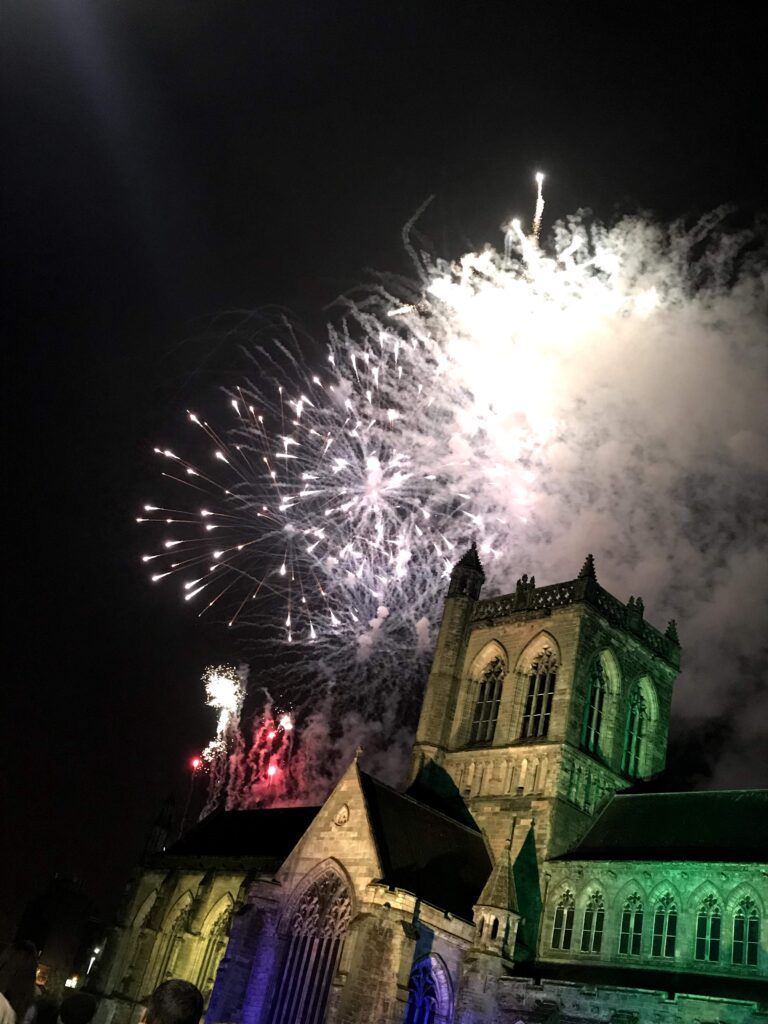Paisley Abbey is a historic and architectural gem located in Paisley, Renfrewshire, Scotland. Here are some key details about Paisley Abbey:
History
Foundation: Paisley Abbey was founded in 1163 by Walter FitzAlan, the High Steward of Scotland, originally as a Cluniac monastery. It was dedicated to Saint Mary, Saint James, Saint Milburga, and Saint Mirin, who is believed to have founded a religious community on the site in the 7th century.
Royal Connections: The abbey has strong royal connections. It served as the burial place for members of the House of Stewart, including Marjorie Bruce, the daughter of Robert the Bruce and the mother of King Robert II, the first Stewart king of Scotland.
Reformation and Restoration: Like many religious buildings in Scotland, Paisley Abbey suffered damage during the Reformation in the 16th century. It underwent significant restoration in the 19th and 20th centuries to preserve its historical and architectural integrity.
Architecture
Gothic Style: The abbey is a fine example of Gothic architecture, featuring a large, intricate structure with beautiful stained glass windows, detailed stone carvings, and pointed arches.
Nave and Choir: The nave and choir are particularly noteworthy for their scale and the quality of their architectural details. The choir is home to the abbey’s organ and choir stalls, often used for musical performances.
Cloister and Chapter House: Although much of the original cloister and chapter house no longer survive, the remnants provide insight into the abbey’s monastic past.
Significance
Religious Importance: As a former monastic community and current parish church, Paisley Abbey has been a continuous center of Christian worship for centuries.
Cultural and Historical Role: The abbey has played a pivotal role in the local community’s history, serving as a place of worship, education, and community gatherings.
Visiting Paisley Abbey
Location: Paisley Abbey is situated in the heart of Paisley, making it easily accessible to visitors exploring the town.
Tours and Accessibility: The abbey is open to the public, offering guided tours that highlight its rich history, architecture, and significant artifacts. It is accessible to people with disabilities.
Events and Services: The abbey hosts regular church services, concerts, and community events. Its acoustic properties and historic ambiance make it a popular venue for musical performances.
Notable Features and Artifacts
Stained Glass Windows: The abbey is renowned for its beautiful stained glass windows, which depict various biblical scenes and saints.
Tomb of Marjorie Bruce: The tomb of Marjorie Bruce, the mother of Robert II, is located in the abbey and is a site of historical interest.
Paisley Pattern: While not directly linked to the abbey, the town of Paisley is famous for the Paisley Pattern, a distinctive textile design. The abbey sometimes features exhibitions and events celebrating this local heritage.
Nearby Attractions
Paisley Museum and Art Galleries: Located nearby, these offer additional insights into the town’s history and cultural heritage.
Coats Observatory: A short distance from the abbey, it is one of the few public observatories in Scotland.
Paisley Abbey is a key historical and cultural landmark, reflecting the rich religious and social history of Paisley and its significance in Scotland’s
